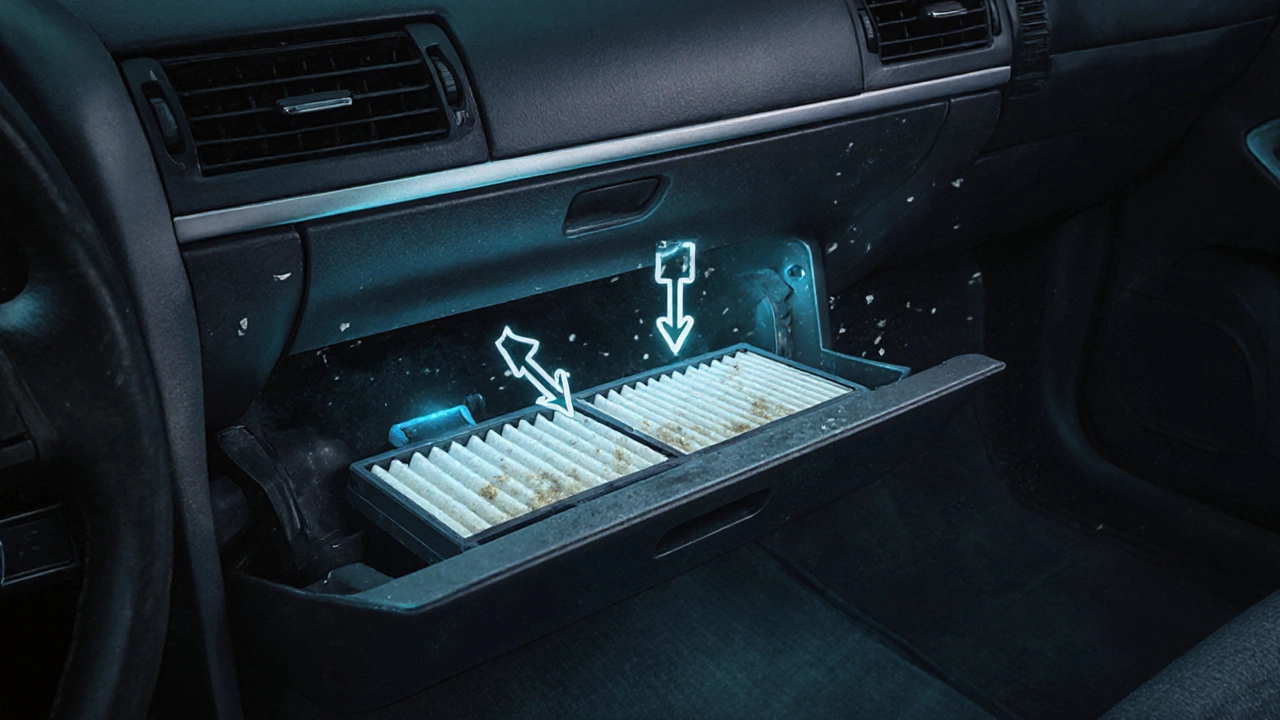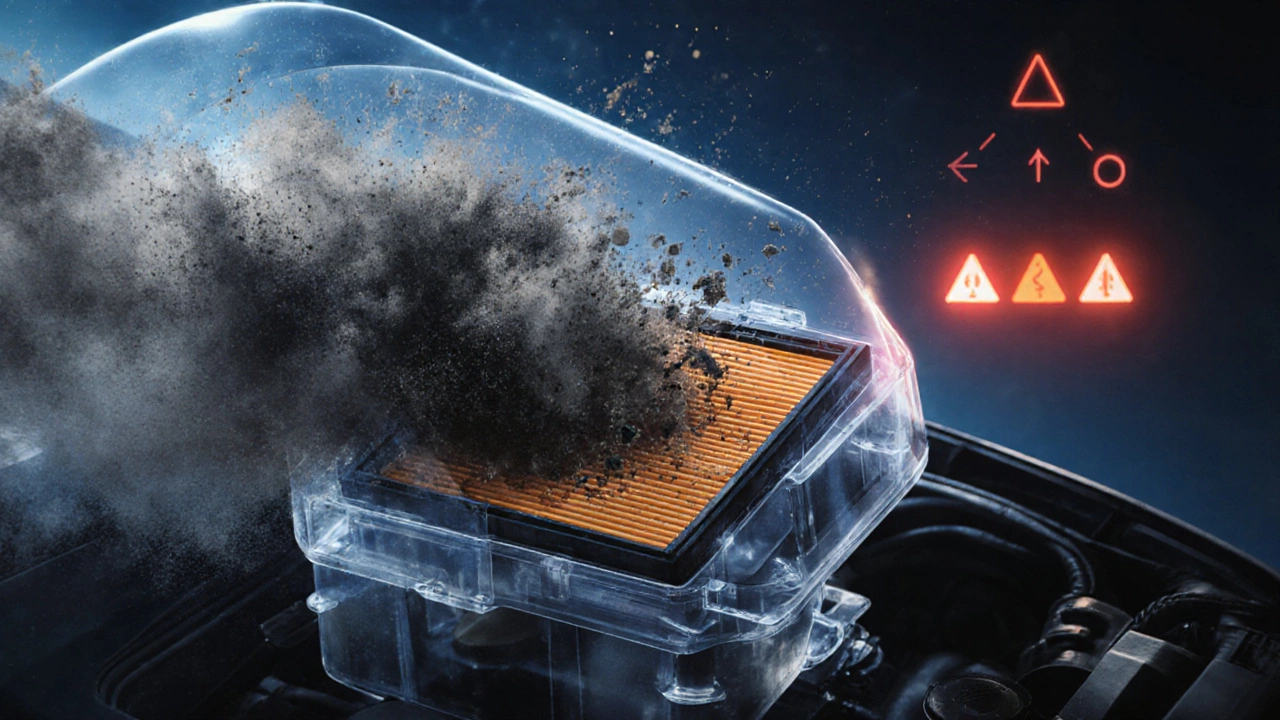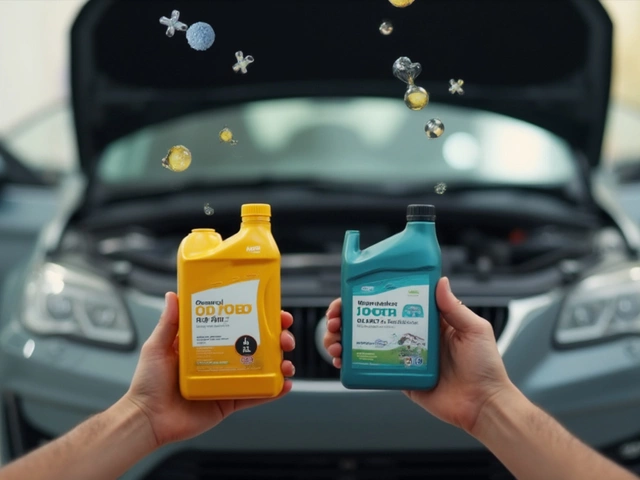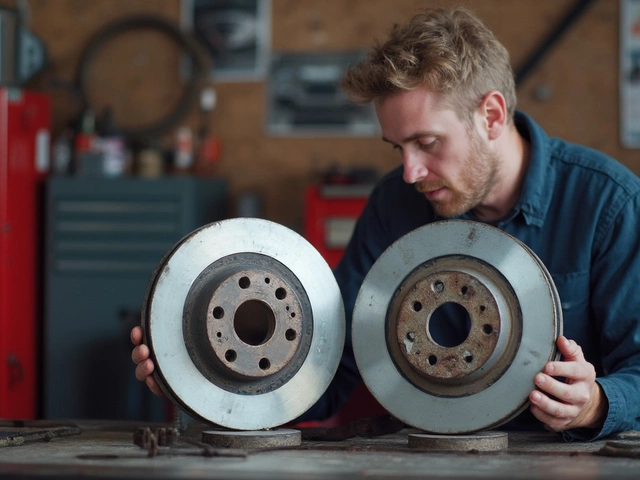Most drivers don’t think about their air filter until their car starts running poorly. Rough idling, reduced acceleration, or even a check engine light can all trace back to a clogged or dirty air filter. But replacing it isn’t complicated-and doing it right matters. A properly installed air filter keeps dust, dirt, and debris out of your engine (or cabin), improves fuel efficiency, and prevents costly damage down the line. Here’s exactly how to do it, step by step, whether you’re dealing with an engine air filter or a cabin air filter.
Understand the Two Types of Air Filters
Not all air filters are the same. There are two main types you’ll encounter in your vehicle:
- Engine air filter: Located in the engine bay, this filter pulls clean air into the engine for combustion. A dirty one reduces power and fuel economy.
- Cabin air filter: Found behind the glove box or under the dashboard, this one cleans the air entering your car’s interior. It traps pollen, dust, and exhaust fumes so you breathe cleaner air.
These filters are not interchangeable. Mixing them up will cause problems. Your owner’s manual will tell you which one you’re working with-and where it’s located. If you don’t have the manual, search online using your car’s make, model, and year. For example, a 2022 Honda Civic has its engine air filter on the passenger side of the engine bay, while the cabin filter sits behind the glove compartment.
Gather Your Tools
You don’t need fancy gear. Just a few basic things:
- New air filter (make sure it’s the correct part number for your vehicle)
- Flashlight or phone light (to see inside tight spaces)
- Phillips or flathead screwdriver (sometimes needed to remove clips or panels)
- Gloves (optional, but helpful if the housing is dusty)
- Microfiber cloth (to wipe out debris)
Don’t buy a filter based on price alone. Cheap filters may look similar but often use inferior materials that break down faster. Stick with brands like K&N, Fram, Mann-Filter, or the OEM part recommended by your manufacturer. For most cars, a new engine air filter costs between $15 and $40. Cabin filters run $20 to $50.
Step-by-Step: Installing the Engine Air Filter
Start with the engine air filter. It’s usually the easiest to replace.
- Turn off the engine and let it cool. Working on a hot engine risks burns.
- Open the hood and locate the air filter housing. It’s a black plastic box connected to a large hose leading to the throttle body.
- Unclip or unscrew the housing cover. Most use plastic clips you can release with your fingers, but some require a screwdriver. Take note of how the cover fits-it might have a specific orientation.
- Remove the old filter. It will likely be covered in dust, dirt, or leaves. Don’t shake it outside-the debris will just fall back into the housing.
- Use the microfiber cloth to wipe the inside of the housing. Pay attention to the edges where the filter sits. Any grit left behind can scratch the sealing surface.
- Place the new filter in the same orientation as the old one. Look for arrows on the frame-they point toward the engine. If there are no arrows, match the shape and folds exactly.
- Reattach the cover. Make sure all clips snap securely. A loose cover lets unfiltered air into the engine, which can cause serious damage.
- Close the hood and start the car. Listen for any unusual noises. If you hear a hissing sound, the cover isn’t sealed right.

Step-by-Step: Installing the Cabin Air Filter
The cabin air filter is trickier because its location varies. Some are behind the glove box, others under the dashboard or even under the hood near the windshield.
- Locate the cabin filter access panel. In most vehicles, you’ll need to open the glove box and squeeze the sides to drop it down. Some have a small panel on the passenger side of the dashboard.
- Remove the old filter. It may be stuck from moisture or mold. Use gloves and pull slowly. If it’s brittle or crumbling, you might need tweezers to remove fragments.
- Clean the housing. Use the cloth to wipe out any dust, leaves, or debris. Mold or mildew buildup here can cause bad odors when you turn on the AC.
- Insert the new filter. Like the engine filter, cabin filters often have directional arrows. These should point toward the blower motor (usually toward the back of the car).
- Reinstall the panel or glove box. Make sure everything clicks back into place. A loose panel can rattle or let unfiltered air in.
Common Mistakes to Avoid
Even experienced DIYers mess this up sometimes. Here are the top errors:
- Installing the filter backward: Arrows matter. If airflow is reversed, the filter won’t work properly and can even get sucked into the intake.
- Leaving debris in the housing: A single leaf or piece of dirt can get pulled into the engine or blower motor. Wipe everything clean.
- Not securing the cover: A loose clip means unfiltered air enters. This can lead to engine wear or poor cabin air quality.
- Using the wrong filter: Filters vary by size, shape, and material. A filter that looks close might not seal correctly.
- Skipping the replacement schedule: Most manufacturers recommend replacing the engine air filter every 15,000 to 30,000 miles. Cabin filters need changing every 12,000 to 15,000 miles-or sooner if you drive in dusty or urban areas.
How Often Should You Replace Your Air Filter?
There’s no universal answer. It depends on where you drive.
- If you drive mostly on highways in clean areas: every 30,000 miles.
- If you drive in dusty, rural, or construction-heavy areas: every 10,000 to 15,000 miles.
- If you live in a city with heavy traffic: check the cabin filter every 12,000 miles. Pollutants build up fast.
- If you notice bad smells from the vents or reduced airflow: replace it immediately.
Look at the old filter. If it’s black with grime or you can’t see light through it, it’s time. A clean filter looks like white or light gray mesh. If it’s brown or gray with visible dirt clumps, replace it now.

What Happens If You Don’t Replace It?
Ignoring a dirty air filter doesn’t just affect performance-it can cost you money.
A clogged engine air filter forces the engine to work harder to pull in air. This can reduce fuel economy by up to 10%, according to the U.S. Department of Energy. Over time, it can also cause carbon buildup on valves and pistons, leading to expensive repairs.
A blocked cabin filter reduces airflow through your HVAC system. Your AC might blow weakly, or you might smell mustiness when you turn it on. In extreme cases, the blower motor can overheat and fail-replacing that costs $300 to $600.
It’s one of the cheapest maintenance tasks you can do. A $25 filter prevents a $500 repair.
Can You Clean and Reuse an Air Filter?
Some performance filters (like K&N’s reusable cotton gauze filters) are designed to be cleaned and oiled. But 95% of factory-installed filters are disposable.
Don’t try to vacuum or wash a standard paper or foam filter. It won’t restore its efficiency, and you risk tearing the material. Even if it looks clean, the fibers are packed with microscopic particles that reduce airflow. Replacing it is always the safer, more effective choice.
Final Check: Did You Do It Right?
After installation, test it:
- Start the car and listen for whistling or hissing sounds near the air box.
- Turn on the AC or heater. Airflow should be strong and odor-free.
- Check the dashboard. No warning lights should appear.
- Take a short drive. Engine response should feel smoother, especially when accelerating.
If everything feels normal, you did it right. Keep the receipt and note the date and mileage on your phone or in your glove box. That way, you’ll remember when it’s due again.
Can I drive without an air filter?
No. Driving without an air filter lets dust and debris enter your engine. Even a short drive can cause scratches on cylinder walls, damage valves, or clog fuel injectors. This leads to expensive repairs. Never run your engine without a filter.
How do I know if my cabin air filter needs replacing?
Signs include weak airflow from vents, a musty or moldy smell when the AC turns on, increased dust inside the car, or allergy symptoms worsening while driving. If it’s been over a year since you last changed it, replace it-even if it looks okay.
Do I need to replace both filters at the same time?
No. Engine and cabin filters have different replacement schedules. Replace the engine filter based on mileage and driving conditions. Replace the cabin filter based on air quality and odor. They’re separate systems and don’t affect each other.
Why does my car smell bad after replacing the cabin filter?
The smell usually comes from mold or mildew that built up inside the HVAC ducts before you replaced the filter. The new filter traps particles, but the odor source is still there. Run the AC on max with the windows open for 10-15 minutes to flush out the system. Consider using an HVAC cleaner spray designed for cars.
Can I install a high-performance air filter myself?
Yes. High-performance filters like K&N are designed for DIY installation and fit in the same housing as stock filters. Just make sure you get the exact model for your car. Follow the same steps: remove old, clean housing, insert new, secure cover. They’re not harder to install, but they require occasional cleaning and oiling every 30,000-50,000 miles.






